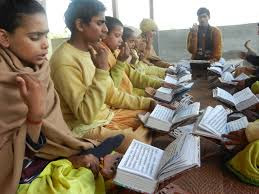The migration of Indian musical instruments to the countries surrounding India at an early period forms an interesting subject of study. In Pre-Buddhist times, India seems to have had commercial and other relations with Egypt, Sumer and other Middle-Eastern countries.
Buddhism was a great force in the expansion of Indian culture. The period between the 4th and 7th centuries was, for the music of India, a period of great expansion. That Indian musical instruments migrated to Central Asia during this period is proved by the existence of Indian instruments in the wall paintings, at Quizil Yoktan, Tuanhuang and other Buddhist centres of Central Asia. The mandolin-shaped veena which frequently occurs in the sculptures at Amaravati, Nagarjunakonda and Gandhara seems to have been introduced to Central Asia by the Buddhist missions. This veena became pipa in China and was changed to the biwa when it reached Japan in the 8 century.
Sculptural representation of musical instruments depicted in Borobudar, Prambanam, Champa and other places confirm that the music of India spread to neighbouring countries in early centuries. The illustrations of musical instruments at Borobudar show a remarkable similarity to those found in India. The Kachchapi veena attributed to Goddess Saraswati still survives in the Phillipines where it is known as kadjapi.












